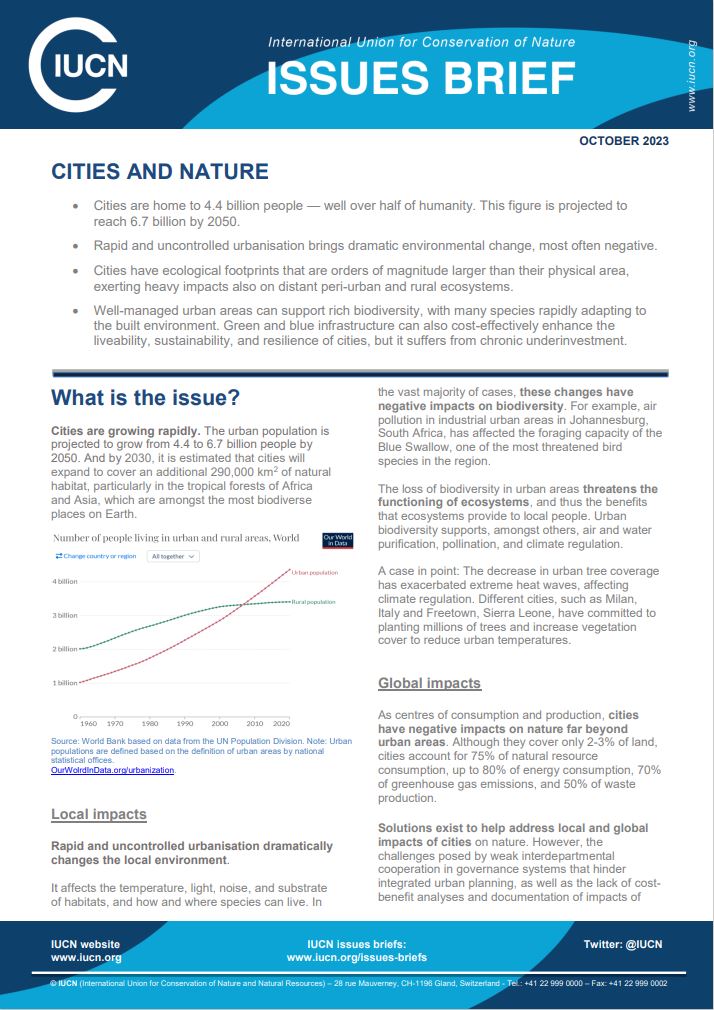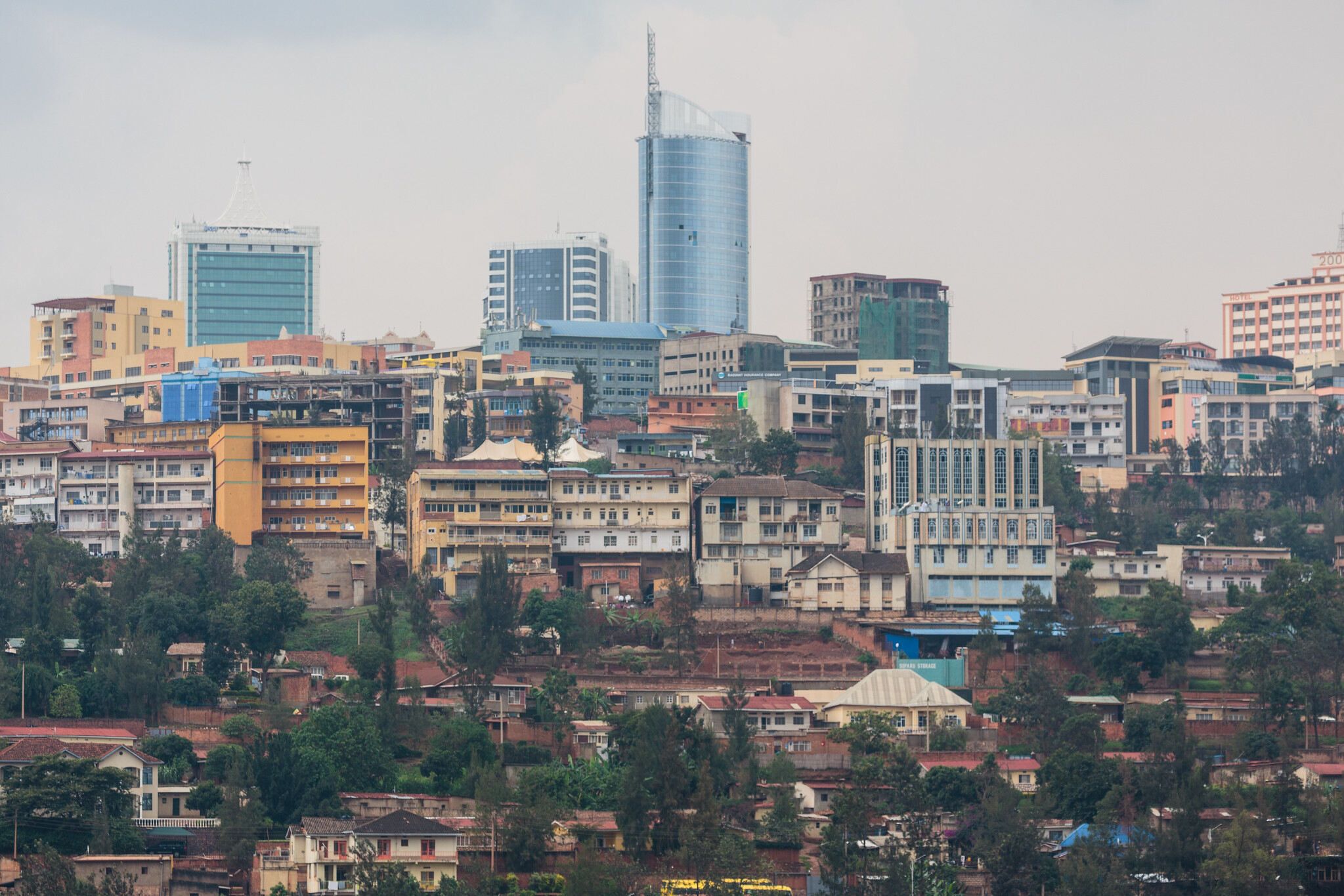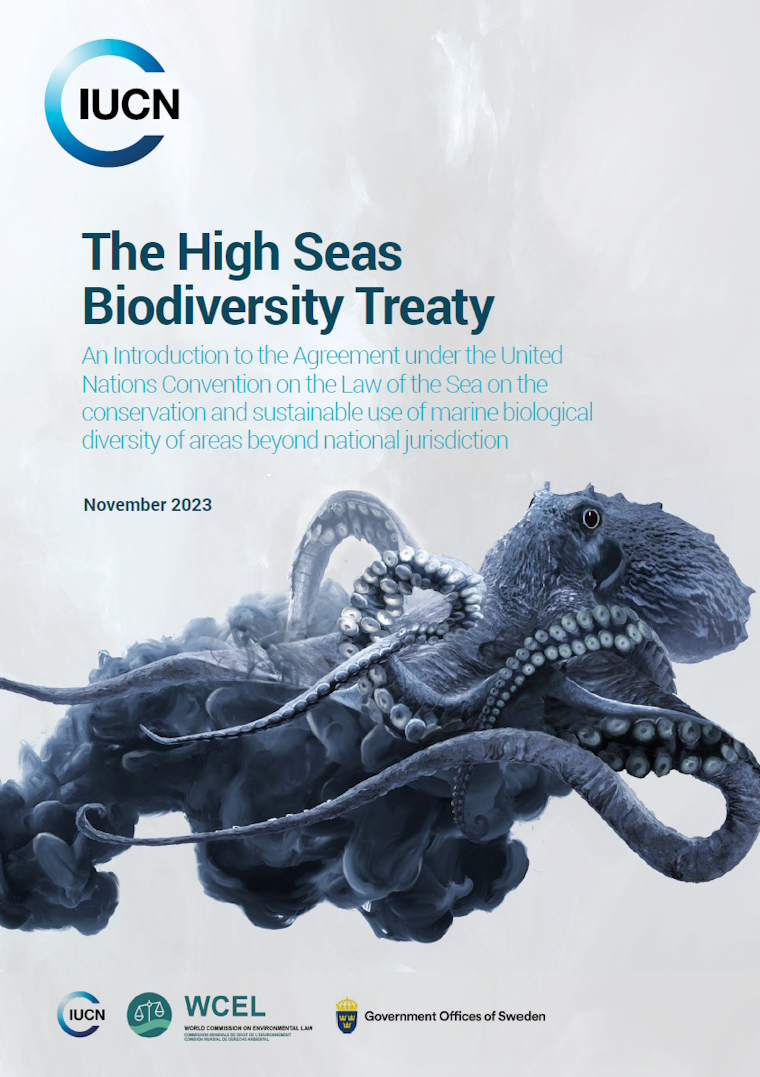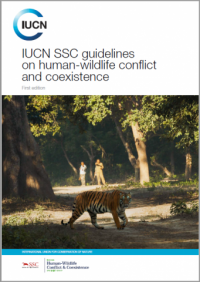What is the issue?
Cities are growing rapidly. The urban population is projected to grow from 4.4 to 6.7 billion people by 2050. And by 2030, it is estimated that cities will expand to cover an additional 290,000 km2 of natural habitat, particularly in the tropical forests of Africa and Asia, which are amongst the most biodiverse places on Earth.
Local impacts
Rapid and uncontrolled urbanisation dramatically changes the local environment.
It affects the temperature, light, noise, and substrate of habitats, and how and where species can live. In the vast majority of cases, these changes have negative impacts on biodiversity. For example, air pollution in industrial urban areas in Johannesburg, South Africa, has affected the foraging capacity of the Blue Swallow, one of the most threatened bird species in the region.
The loss of biodiversity in urban areas threatens the functioning of ecosystems, and thus the benefits that ecosystems provide to local people.
Urban biodiversity supports, amongst others, air and water purification, pollination, and climate regulation.
A case in point: The decrease in urban tree coverage has exacerbated extreme heat waves, affecting climate regulation. Different cities, such as Milan, Italy and Freetown, Sierra Leone, have committed to planting millions of trees and increase vegetation cover to reduce urban temperatures.
Global impacts
As centres of consumption and production, cities have negative impacts on nature far beyond urban areas. Although they cover only 2-3% of land, cities account for 75% of natural resource consumption, up to 80% of energy consumption, 70% of greenhouse gas emissions, and 50% of waste production.
Solutions exist to help address local and global impacts of cities on nature. However, the challenges posed by weak interdepartmental cooperation in governance systems that hinder integrated urban planning, as well as the lack of cost-benefit analyses and documentation of impacts of Nature-based Solutions, means these are often not deployed.







